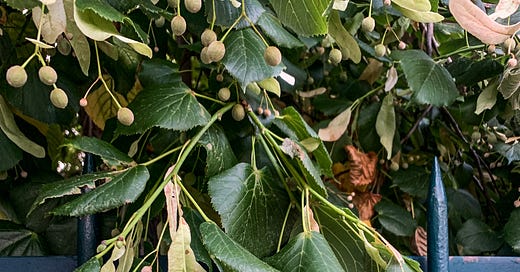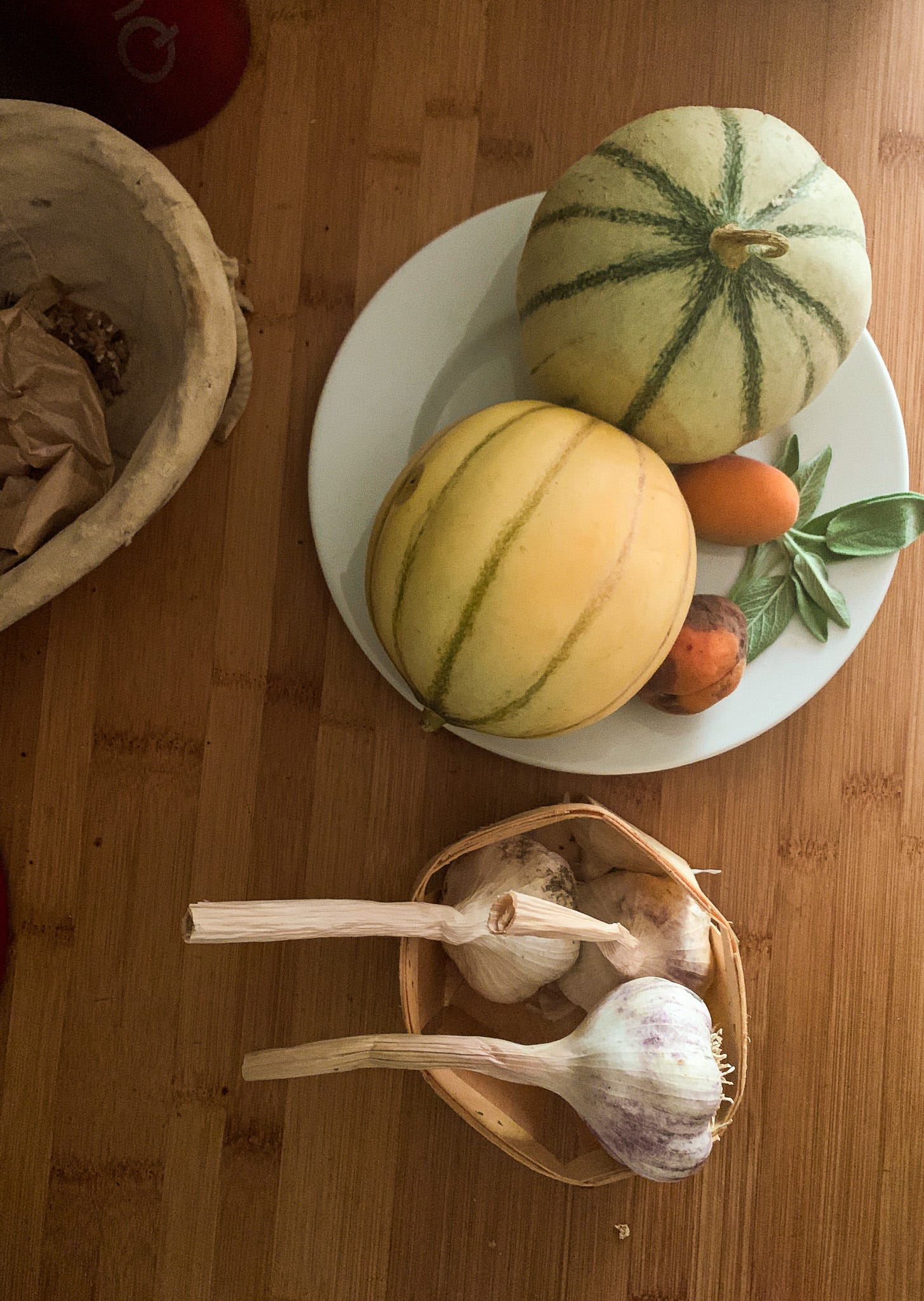I stayed with my friend Cécile for most of my time in Aix. Her home is a special place filled with international students (there are often one or two in residence), her sons who come and go between university classes, her kind husband Emmanuel, stacks of books, a well loved piano and an Australian Shepherd named Tilleul. I’ve had to practice pronouncing his name in my English mouth, pulling back to shape the ‘tee’ then pushing forward to form the ‘eul’. He is named after un tilleul, a linden tree. The tree produces flowers in Provence in mid-June that Cécile picks and dries for tea.
I brought some ‘tilleul tea’ home with me. Cécile recommended leaving the blossoms loose in a mug, then adding boiling water and leaving them to bloom before sipping. She said this as she pushed her arms out horizontally like an opera singer, exhaling, blooming.
We all bring different things home when we travel. One friend, who has lived in France off and on throughout her life, buys a block of French butter every time she visits Monoprix, the French grocery store. By the end of her visit she has a freezer full, ready to be carefully packed in a small cooler bag that tucks into her suitcase. This way she can experience France when she’s back in Canada. Probably on a crispy, peppery radish with a pinch of sea salt.
I inhale the woodsy, floral tea in my Canadian kitchen. I can sense two moments overlapping, then and now, blending together in a swirl of steam.
*
Cécile moves quickly in the kitchen and wastes nothing. On my first night in Aix, we cooked dinner together using the vegetables from her local market. There were zucchinis and their flowers in the box, fat, lumpy tomatoes, lettuces, and melons from a bin at the back of the shop that weren’t selling because of their lack of sweetness. I left the kitchen for a moment - perhaps to put on an apron, or tie back my hair - and when I came back, melon was simmering on the stove with candied ginger and a touch of honey and water, and oil shimmered in a deep frying pan. Cécile was whisking batter, a recipe from her head, to coat the zucchini flowers before frying. I helped by frying the last of the flowers, and when they were golden brown and had drained on a towel, I laid them on a platter, sprinkled them with sea salt, then lifted the bowl to wash it in the sink. But before I could pivot, Cécile had spotted a few tablespoons of batter left in the bowl. She scooped it into the hot oil and made a tiny pancake.
We set the table in the garden and sat down in the cool of the late evening. Most of the food on the table was unknown for the two nineteen year-old Canadian and American students sitting with us - a thick walnut pesto, fried ‘courgette’ flowers, the melon compote served over plain yogurt for dessert - but Cécile just passed the dishes around offering ‘un goût’ (a taste) or ‘une portion’? It reminded me of a parenting book I had read when the boys were young, emphasizing the importance of choice between two things, rather than asking a child to come up with their own answer. This shirt or that one? This apple or that banana? The approach works for parents and provides boundaries while giving agency to kids. I could see, sitting here in France, how the approach works on adults too. It’s gentle and in this case, palate expanding, but wastes very little.
We finished the meal with cheese - a soft chèvre covered with bleuet (cornflower), another coated in ash, and a block of compté. Baguette was sliced in mid-air by Emmanuel, his knife cutting through just enough of the bread for each of us to tear off a piece. When we were finished a fitted lid went back on the cheese board and the whole thing slid into the fridge.
*
I couldn’t fit the cheese board into my suitcase, but a bag of tea tucked easily inside my hat. Emmanuel’s style of slicing the bread is in my head forever, and now I know that zucchini flower batter is delicious with a dollop of pesto spooned on top.






❤️❤️❤️❤️❤️❤️❤️this and U🤣
Love your writing Lindsay!